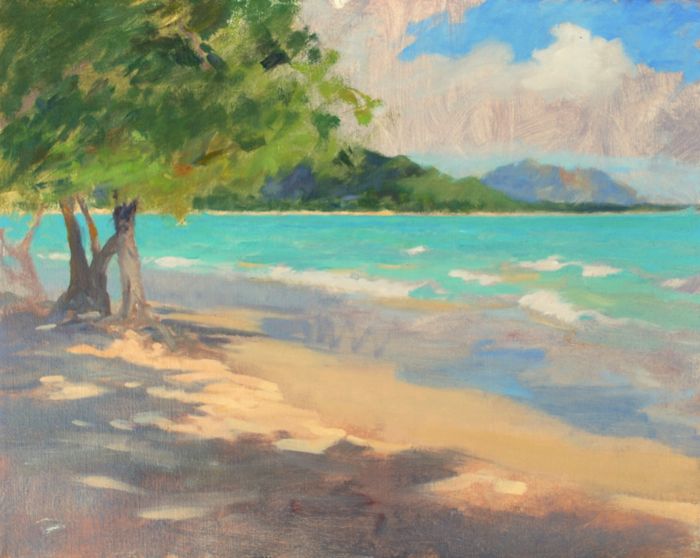
Fortunately the weather is looking generally cooperative for this second session. After arriving at the location and setting up, I take a few minutes to compare what I’ve gotten so far in relation to the actual subject.
I look at the large shapes (also refereed to as “masses”) of trees, ocean, waves, sand, hills, etc. and see if they are as I want them. This is the basis of the design, and what we’ll be living with after the painting is completed. Then I check the color of these masses, color which at this elementary stage is relatively flat in character, middle tones thought of as puzzle shapes fitted against one another. These colors will be developed and refined in the ensuing sessions.
Here’s where I left off yesterday:
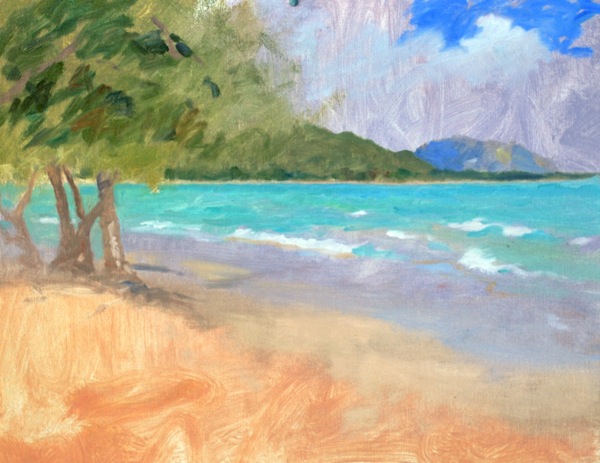
By assessing the oil painting next to nature, I decide to begin by simplifying some shapes and values to make them work better. This first part of the morning has interrupted sunlight…clouds move in, and I suddenly have very little to work with in terms of light and color. When this happens, I always choose to refine and adjust shapes, which are not so influenced by the light. In this instance it’s the tree trunks and wave shapes which I refine while I wait for sunlight to reappear.
The light returns and I’m now free to move ahead with the next step, which is going for the shadows and color on the sand. These colors are tricky; they change from warm to cool quickly as the morning progresses. I know from experience that the shapes become decidedly bluer, so I decide to go with the slightly warmer notes I observe earlier and which I mix with a scramble of ultramarine blue, terra rosa or cadmium scarlet, ochre and white. I enjoy painting these sorts of passages, and go in with this basic violet shadow value over the prior day’s warm ochre wash, using a large egbert, and break light selectively into it with a separate brush. Once that shadow shape is in place, nuances, eye path (where the spots of light lead the viewer) and refining the value and color are my preoccupations. I try to keep the brushwork simple and suggestive.
Stepping Away
I can’t stress enough how viewing and working on the entire painting as a whole benefits the outcome. Stepping back often, viewing the painting through a small mirror, trying to always consider additions to the painting in terms of their impact on the whole painting. This leads to unity in the picture…the sense of an easy look to the final painting.

By the time this session winds down, my subject has returned again to glorious full sunlight and I’ve been able to work and adjust overall color, which is refining the prior days laid-in color with additional observations…working around every area of the painting, keeping the entire picture advancing forward. Sort of like a cattle drive in a Western movie.
After bringing the painting back into the studio, I always make some adjustments to the days’ work, which are almost always simplifications of form or value. I let the painting dry in the sun a bit, and look forward to day 3.
The news reports that a Hurricane is brewing offshore,which may or may not interrupt my little agenda. But we’ll see.
Thanks for coming along with me!

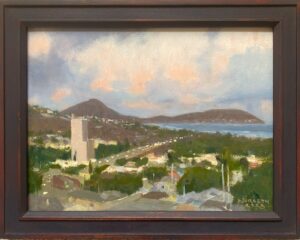
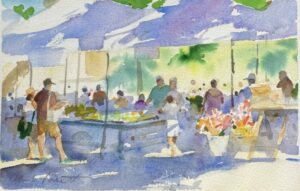
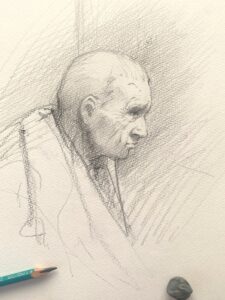
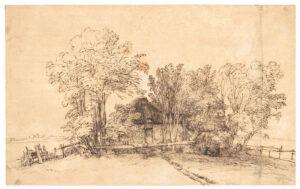
2 Comments
Really great meeting you today. On my way out to purchase veridian
green. Love your web site. Picasso’s quote on the topic. The world doesn’t make sense Why should I do paintings that do like the quote you have used much more
Thank you Mike. It was fun meeting you as well. I hope you have a great visit here and say hi to PDX for me!